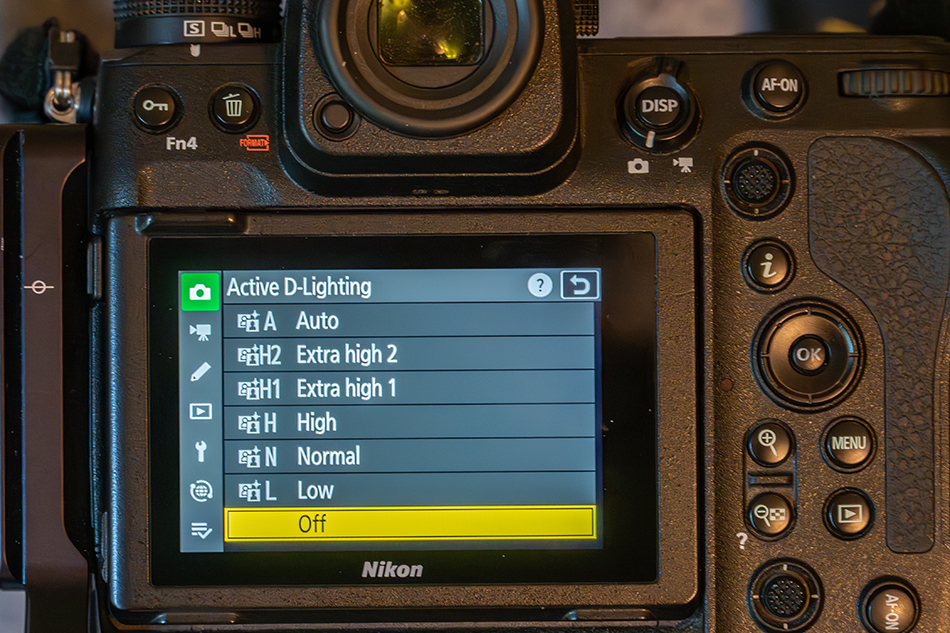As photographers have been setting up their Nikon Z8 and Z9s some questions have come up about a few specific settings. One of those is Active D lighting, found in the shooting menu. The big distinction with in-camera settings is those that affect RAW files and those that only affect JPEGS. We always encourage photographers to photograph using RAW files since this gives you a lot more options to adjust things after capture without any negative processing effects. When you shoot in JPEG mode the camera settings are applied to the image and it is saved as a jpeg, so any further editing may degrade the image. If you really want to open up shadows you want to be photographing in RAW.
What about Active D Lighting? This feature sounds cool…the camera tries to preserve highlight and shadow details, and will apply these adjustments to a jpeg image. If you shoot in RAW you can either use the settings when the image is opened, or just adjust the sliders as you need to…gotta love the flexibility of editing RAW files.
But here is an interesting fact. Turn on your Active D Lighting at high and take a picture. Then take the same image with Active D Lighting turned off. You will notice a stop or more difference in the exposure. So while Active D Lighting isn’t directly affecting the RAW file, it is changing the exposure by a stop or more which will affect the final RAW file. With this in mind I always turn off my Active D Lighting. If I want to change exposure I’ll use exposure compensation.
